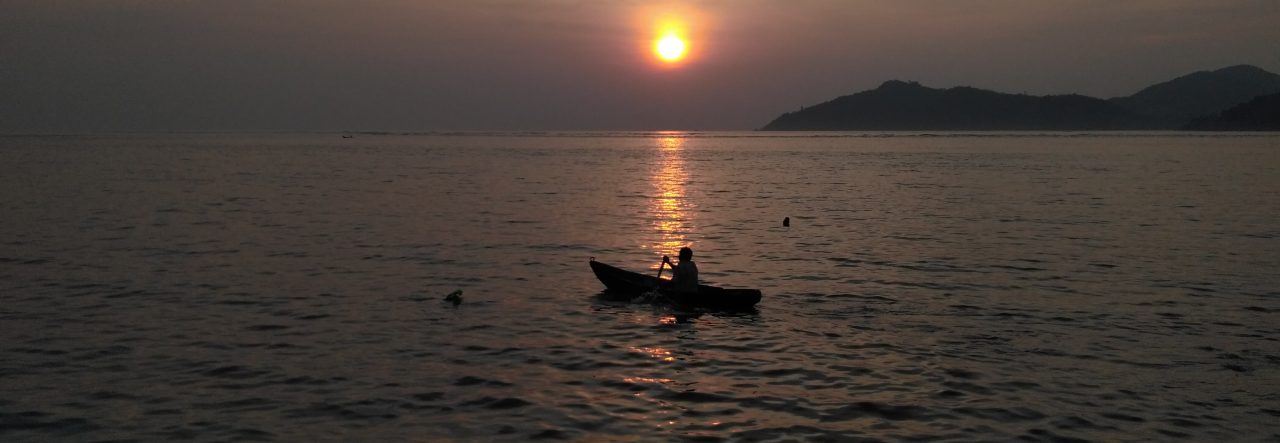1. Opposition to Tadadi Port, The Hindu, 14 March 2015
“The government’s move to embark on the Rs. 38,000-crore sea port construction project at Tadadi village in Uttara Kannada district has been criticised by some as “keeping the public in the dark”.
2. Adani Group to Invest 21000 Cr In Karnataka, Financial Express 4 Feb 2016
“Speaking at the inaugural event of Invest Karnataka 2016, the three-day global investors’ meet organized by the Karnataka government at Bangalore Palace Grounds, on Wednesday, Adani said the company would also invest Rs 2000 crore to develop a greenfield seaport at Tadadi in Uttara Kannada district on the west coast of Karnataka. Besides, the group would invest another Rs 500 crore to double the coal handling capacity at New Mangalore Port in Karnataka, he added.”
3. Silent Flows the River, The Deccan Chronicle, 16th September 2016
“For a picture of what the Aghnashini river estuary could look like after being turned into a port, one need only look at the Kochi Harbour, or the nearby Redi Port. Slick with oil from hundreds of vessels, the Indo-pacific humpback dolphins dodge plastic bags and other garbage to find their fish in Kochi. The effects of improper design at Redi has had more serious impacts. Here, trucks dump mined ore off the jetty into an open ship container that is waiting on a mini cargo-ship nearly twenty feet below the jetty. Since the dumping is direct, i.e. without a pipe or channel between the truck and the ship, any passing gust of wind tosses quite a significant percentage of the ore into the water. The results are visible nearly 10 km away. Fishing villages to the north of Redi have begun shutting shop.”
4. Kali, Aghanashini Estuaries to be Heritage Sites, The Hindu, 20 May 2011
“The Kali and the Aghanashini river estuaries in Uttara Kannada district known for their rich mangrove and aqua biodiversity will be declared biodiversity heritage sites shortly. The Western Ghats Task Force has recommended to the Government to take steps in this direction and the Karnataka State Biodiversity Board is likely to make a formal announcement shortly, according to task force chairman Ananth Hegde Ashisar.”
5. Project will ruin Aghanashini estuary’, The Hindu, 13 March, 2015
“Scientists have cautioned that the proposed sea port project will “ruin” the Aghanashini estuary, which is the only natural estuary in the State. Indian Institute of Sciences (IISc.) scientist M.D. Subhash Chandran said it was an ancient river system that houses 80 fish species, clams and mangrove forest. “The port will ruin this rare ecosystem and make the coastal belt vulnerable to cyclone and sea erosion. The river will become ecologically dead,” he said.”
6. Tadadi in Trouble: Why Does Karnataka Govt. Want A Port So Badly?, Daily Hunt, 20 March, 2016
“At least 30 villages and its residents will be adversely affected if this project went ahead. Most of the villagers do not want this port project. This new port development attempt by the state government has happened behind the scenes,” he says, “Even when we attempted to get documents via RTI, it was not forthcoming. Crucial documents were not released. We suspect foul play at the administrative levels. NEERI (National Environment Engineering Research Institute), the Nagpur-based government agency which did the low quality, unprofessional environment impact assessment, is just a cheerleader for the port development.” As is usually the case, the government has promised jobs and development for the residents whose land and livelihood will be taken away. ”
7. Photostory: Along Western Coast: Photostory on Aghanashini and Vapi, Namati website
The photo story brings to the readers the beautiful images of the Aghanashini estuary along with the visual representation of the pristine mangroves, the dependence of local communities in the area mainly by fishing, bivalve collection and other livelihood like growing of peanuts and salt-resistant rice variety called kagga. The photo story also gives us some data on the biodiversity and livelihood such the number of varieties of mangroves found in that area as 16 and the annual production of bivalve which is 22,000 tonnes valued at Rs 58 million. And that 40% of the collectors and sellers are women. It also discusses the issues that have been identified by the paralegal programme of Namati, namely:
– Non recognition of clam harvesters as fishermen by the government and their inability to join the fishers union thereby.
– The threat posed by the proposed port on the ecologically sensitive ecosystem of Aghanashini and the livelihood of the local communities who are dependent on it.
